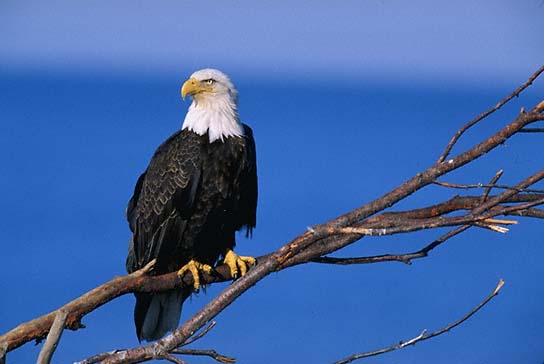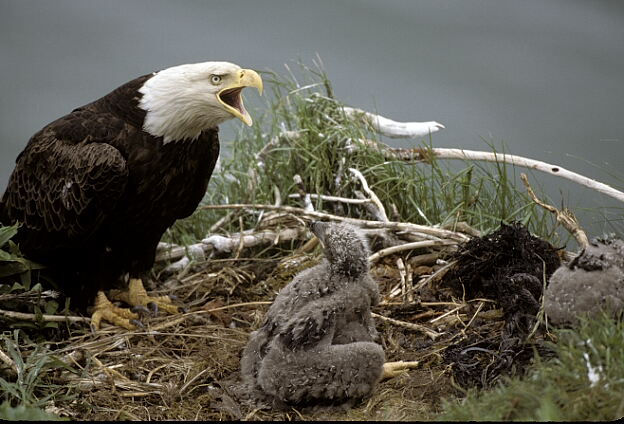Hawk-like Birds
Description
30-31" (76-79 cm). W. 6-7' 6" (1.8-2.3 m). A large blackish eagle with white head and tail and heavy yellow bill. Young birds lack the white head and tail, and resemble adult Golden Eagles, but are variably marked with white and have a black, more massive bill.
Endangered Status
On August 9, 2007, the bald eagle was removed from the federal list of threatened and endangered species. After nearly disappearing from most of the United States decades ago, the bald eagle is now flourishing across the nation and no longer needs the protection of the Endangered Species Act. The two main factors that led to the recovery of the bald eagle were the banning of the pesticide DDT and habitat protection afforded by the Endangered Species Act for nesting sites and important feeding and roost sites. This recovery could not have been accomplished without the support and cooperation of many private and public landowners.
Voice
Squeaky cackling and thin squeals.
Range
Breeds from Alaska east to Newfoundland and south locally to California, Great Lakes, and Virginia; also in Arizona, along Gulf Coast, and in Florida. Formerly more widespread. Winters along coasts and large rivers in much of United States.
Discussion
Bald Eagles are fish eaters, like Ospreys; when they pursue their prey they rarely enter the water as an Osprey does, but instead snatch the fish from the surface with their talons. Where Ospreys are common, the eagles obtain much of their food by stealing it from the smaller "fish hawk."




